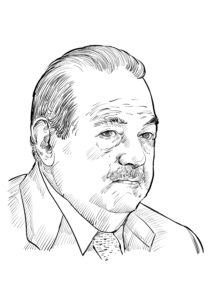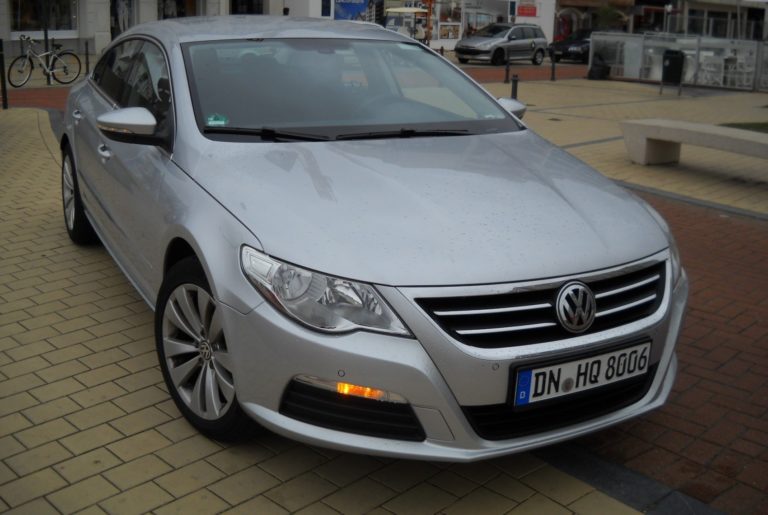Fortunes & Blunders: Carlos Slim
LATIN AMERICAN TYCOONS
South of the US-Mexican border exists a parallel universe. Countries with enormous natural resources and fascinating cultural histories, but also with a bloody past, political coup d’états and ongoing and economic unrest. Central America and South America are seen as a hinterland in the West. Regions devoid of progress, cultural and political sophistication. Yet these are values from a Western perspective, and by opening our eyes we can all learn a great deal.
As we look at two more contrasting figures from the business world, Carlos Slim and Eike Batista, it is to this region that we turn. Each of these men was once among the top ten wealthiest people in the world and were famed in their own country and beyond. One remains a figure of admiration; the other lounges in relative poverty, a prison sentence served, his world collapsed; his empire gone. A modern Ozymandias:
“Look on my Works, ye Mighty, and despair!
Nothing beside remains …”
Carlos Slim—The Cash Machine
“With three work days a week, we would have more time to relax; for quality of life.” —Carlos Slim

Carlos Slim was once the world’s richest man, leaving even the likes of Bill Gates and Warren Buffett in his wake, but due to a declining value of the peso and losses at some of his key holdings, he has slipped in the global rankings. As of 2018, his wealth had shrunk to a mere $61.7 billion, making him #7 on the list of the super wealthy. That is a figure that nevertheless represents approximately 7.5% of his home nation’s gross domestic product.
But given the size of his fortune, he has remained conspicuously frugal. Do not expect to see him in the bays of the Mediterranean, or on the shores of the Caribbean at home in a conspicuously ostentatious yacht. No GPS device is needed to navigate the corridors of his home. He won’t appear on the grid at a Monte Carlo Race with supermodels on each arm.
In fact, he resembles more a person from a higher-middle income background with traditional family values. He appreciates the old bourgeois importance of education, hard work and frugality. His interests are those of the normal citizen, rather than a member of the elite. Most likely, in his leisure time, he will be exploiting his love of baseball rather than indulging in the pastimes of the rich.
But he does enjoy some of the trappings of wealth. Over time, he has developed a pristine interest in fine art. He is considered the world’s foremost collector of Rodin sculptures. Carlos Slim is also one of the great philanthropists of the world, and he is an open critic on how Gates and Buffett handle their philanthropic affairs, saying, for example: “(Bill) Gates has to study how he can (fight poverty) in the same way that Microsoft…succeeded in business, because charity has not solved the problem.”
Fame and recognition, probably unwanted, only came to him following a small investment in that “bastion of liberal America,”—small by his own standards; $250 million might make more of a dent in the pockets of most people.
Upbringing and Career
Carlos Slim was born on January 28, 1940, in Mexico City to a family of five siblings. His parents were Linda Helu and Julian Slim Haddad, who were both of Lebanese descent. His father had already accumulated some wealth through opening dry goods stores in 1911 and 1921. Through his income, he invested in real estate in a commercial district of Mexico City, providing a comfortable upbringing for his family. Also at that time, he was an influential member of the Lebanese-Mexican business community, in which he remained an active and influential force until his death in 1953.
Carlos Slim had a largely comfortable upbringing. Although he was sometimes bullied for his Lebanese roots, within his family he grew up well-protected, something that taught him not only the values of family (something so important in Mexico), but old-fashioned tenets regarding education, hard work and frugality.
His father introduced him to business management at an early age. He learned the principles of good business practices, such as bookkeeping and investing. Early on in his life, he would be putting those lessons to the test. At the age of just 11, he invested in government saving bonds, keeping a detailed ledger to track all his purchases. By 15, he had bought a very small shareholding in Banco Nacional de Mexico—then the largest bank in Mexico.
At age 17, he worked for his father’s company for 200 pesos per week, learning yet another lesson regarding the values of organization, teamwork and reliability.
When it came time to select an academic education, Carlos Slim chose to attend the National Autonomous University of Mexico, where he studied engineering. Even then, he was working hard and making some money on the side. He taught linear programming and algebra to younger students, earning a little pocket money for himself.
But it would be his private investments, which really inspired and drove him to excel, that would determine his future career. He understood early on that a traditional career in civil engineering was out of the question. He knew that his future lay in business ownership and shrewd investment. He finished his course, graduated, and followed his dream.
As soon as Slim finished his degree, he set up his own stock brokerage firm using a combination of the money he had saved and support from his family. There he worked 14-hour days in order to grow his business and his network. His eye was always looking out for the next deal.
It was almost as though he was following the script of Oliver Stone’s iconic movie Wall Street. As a stockbroker, he had direct access to the rich and wealthy of Mexico and he was on the pulse of Mexican business trends. Such a position was a huge advantage in his search for investment opportunities. The young and ambitious businessman was finding the world to be good, and Slim thrived in it.
With the help of his client network, he invested in a number of business deals that included restaurants, retail, manufacturing and construction. He found he was mirroring the work of modern private equity funds more than that of a stockbroker. With each deal, he broadened his business network, his business acumen, and his skills as a deal maker. This would come in handy later in his career.
By 1966, at the age of just 26, he was already worth $40 million in today’s terms. His next step was to expand into real estate by founding Immobiliaria Carso, following a path that his father took but on a much larger scale. The resulting growth spurt in his personal holdings stayed with him for many years, his developing business concerns matched by Mexico’s growing population and economy. By 1972, he had already a diversified business empire that ranged from retail to real estate, to mining companies to printing businesses.[ii]
[i] “Profile: Carlos Slim,” The Telegraph, accessed September, 2018, https://www.telegraph.co.uk/news/newstopics/profiles/4317646/Profile-Carlos-Slim.html
[ii] “Carlos Slim Biography,” TheFamousPeople, accessed September, 2018, https://www.thefamouspeople.com/profiles/carlos-slim-5531.php






